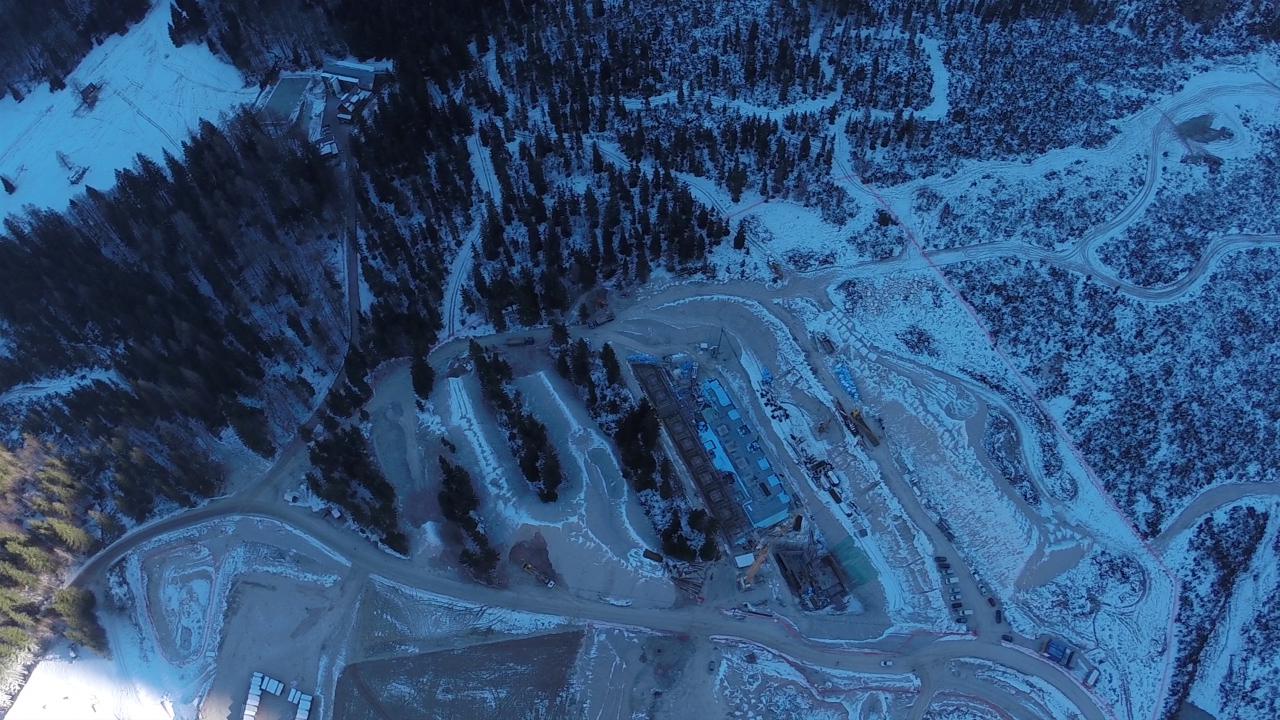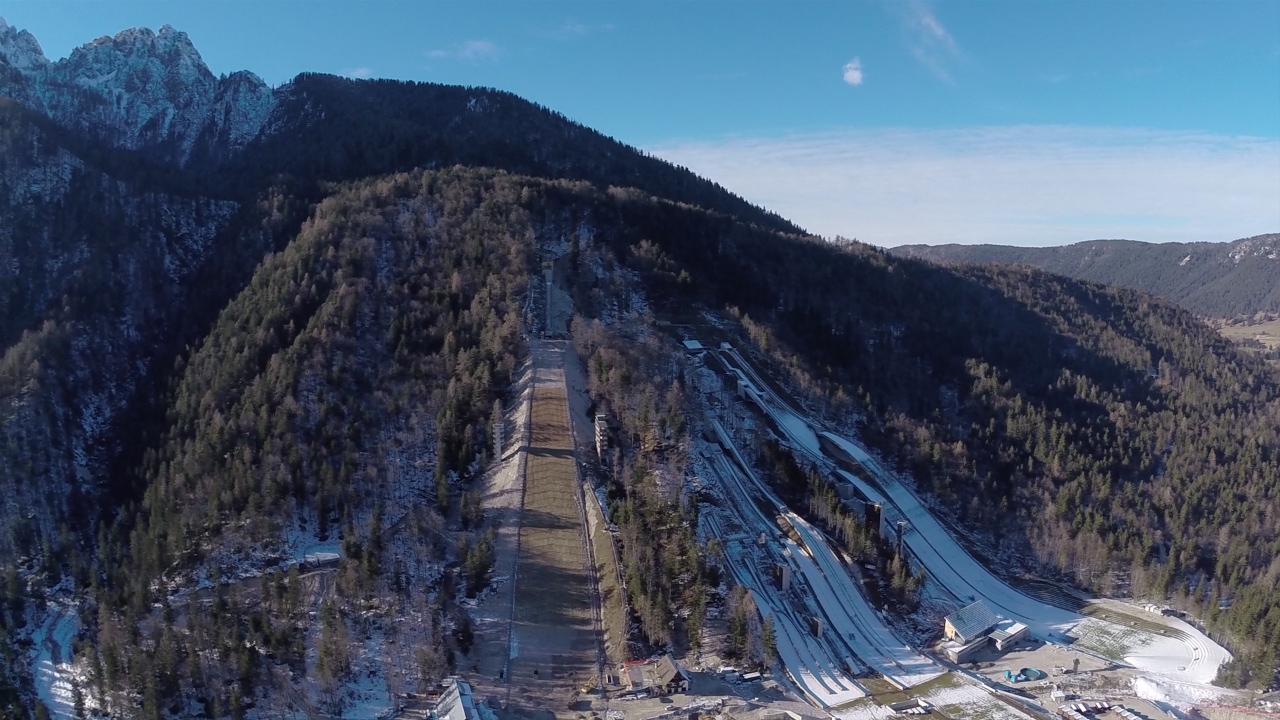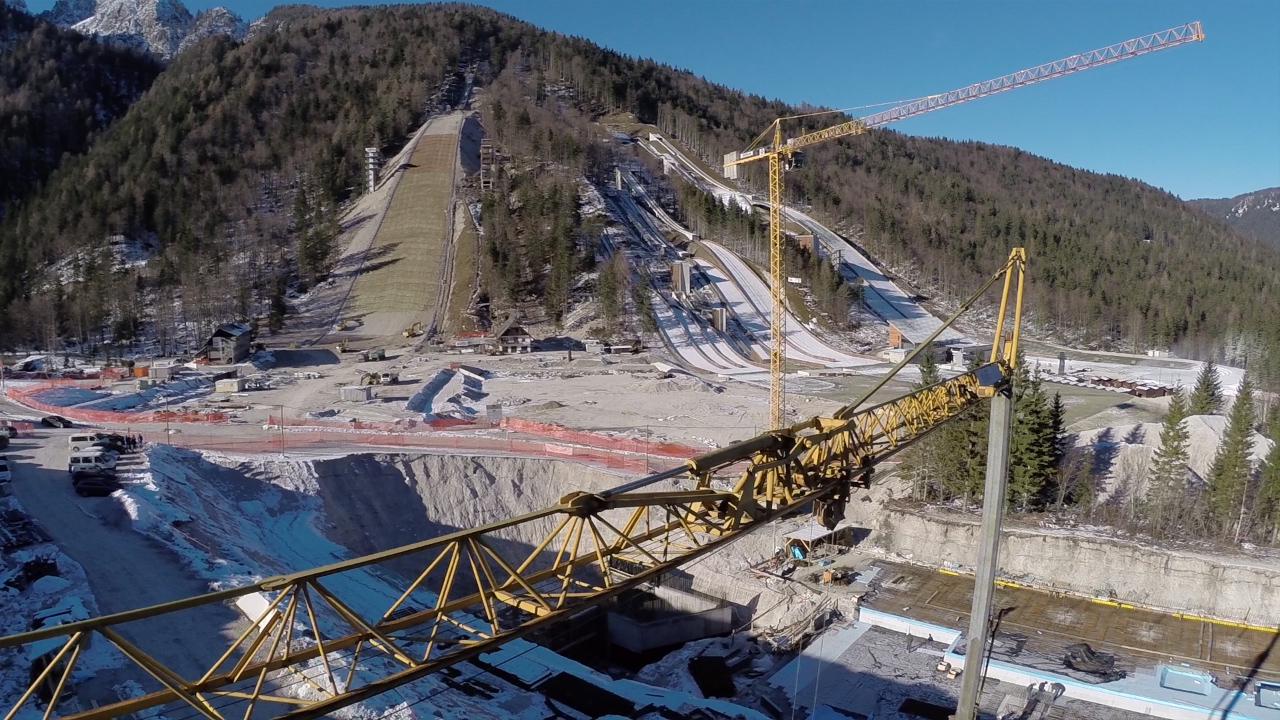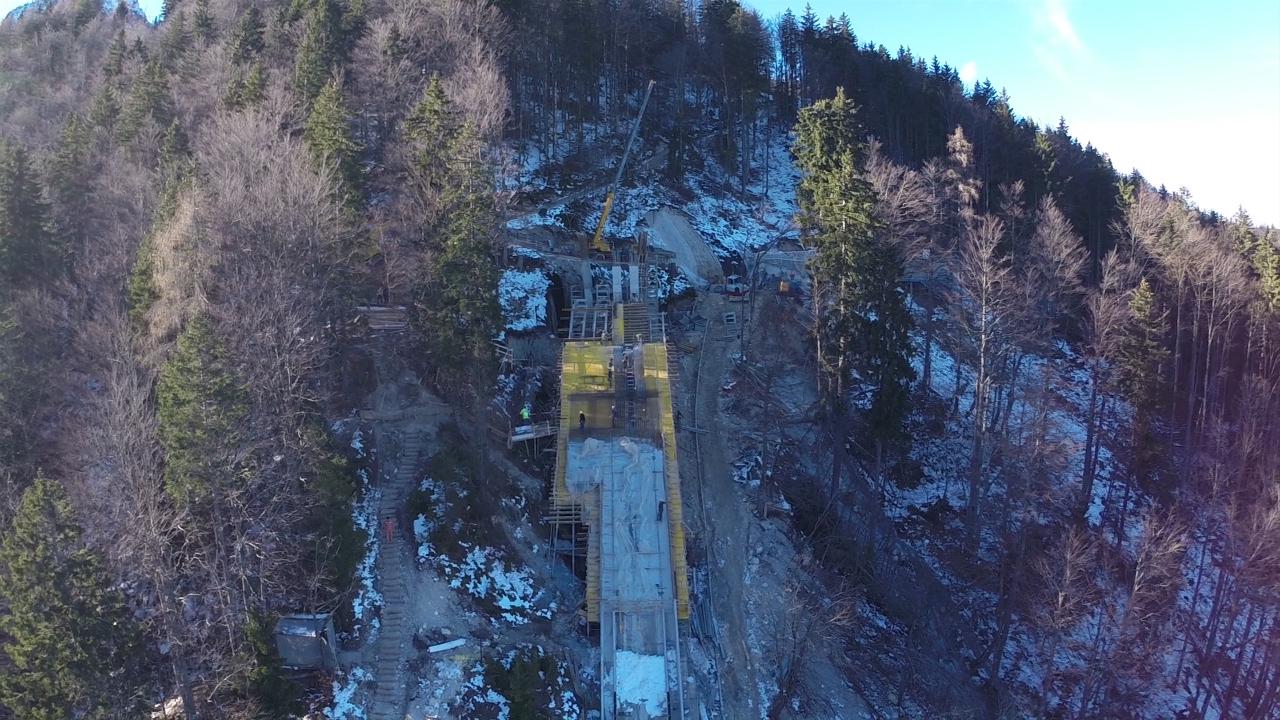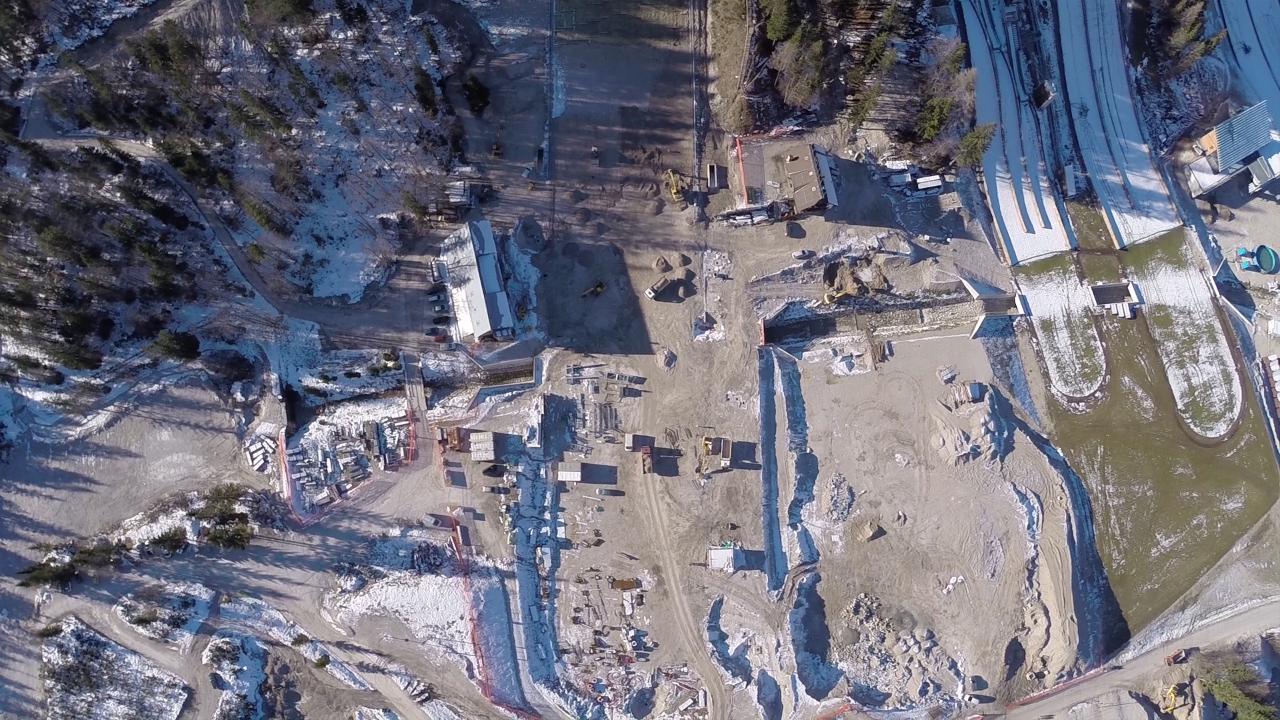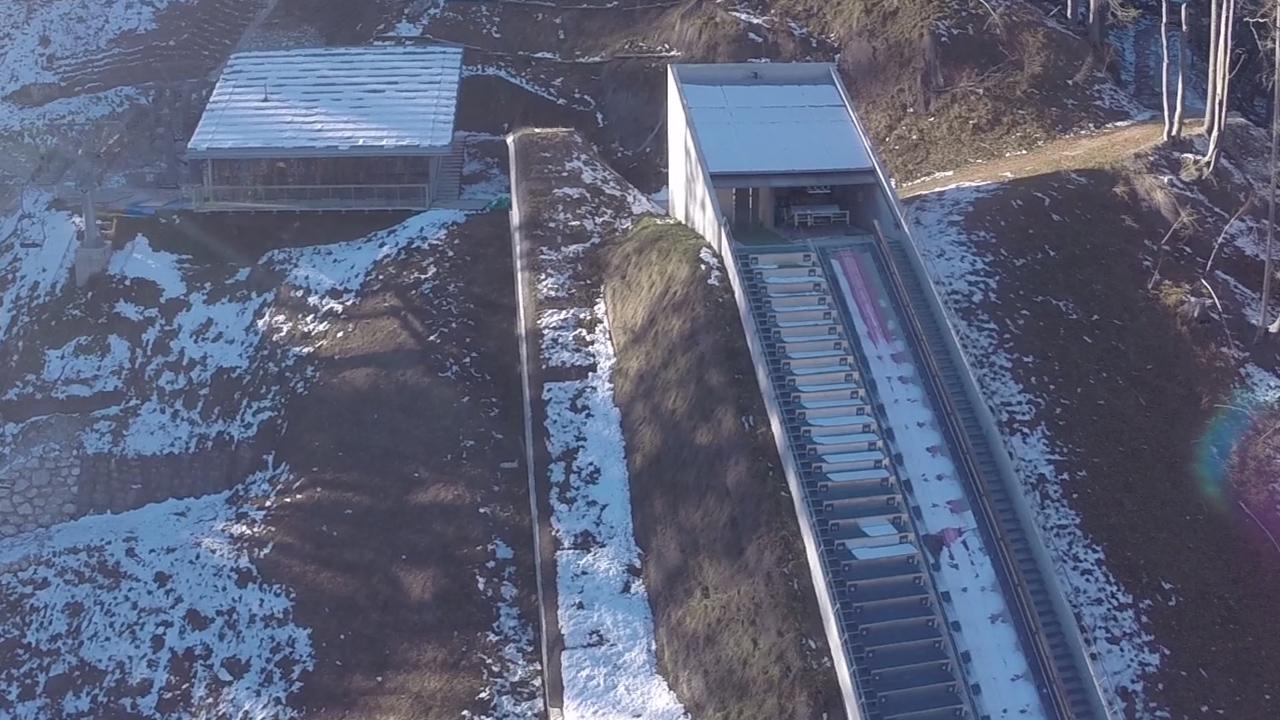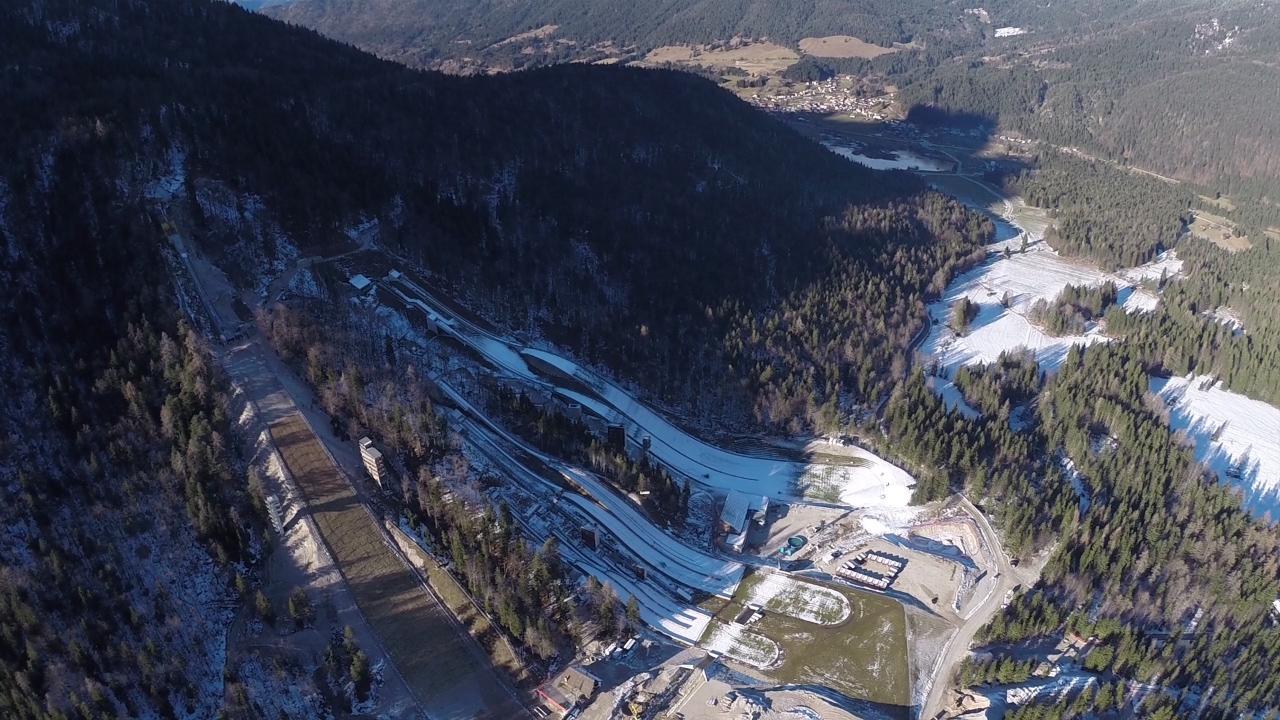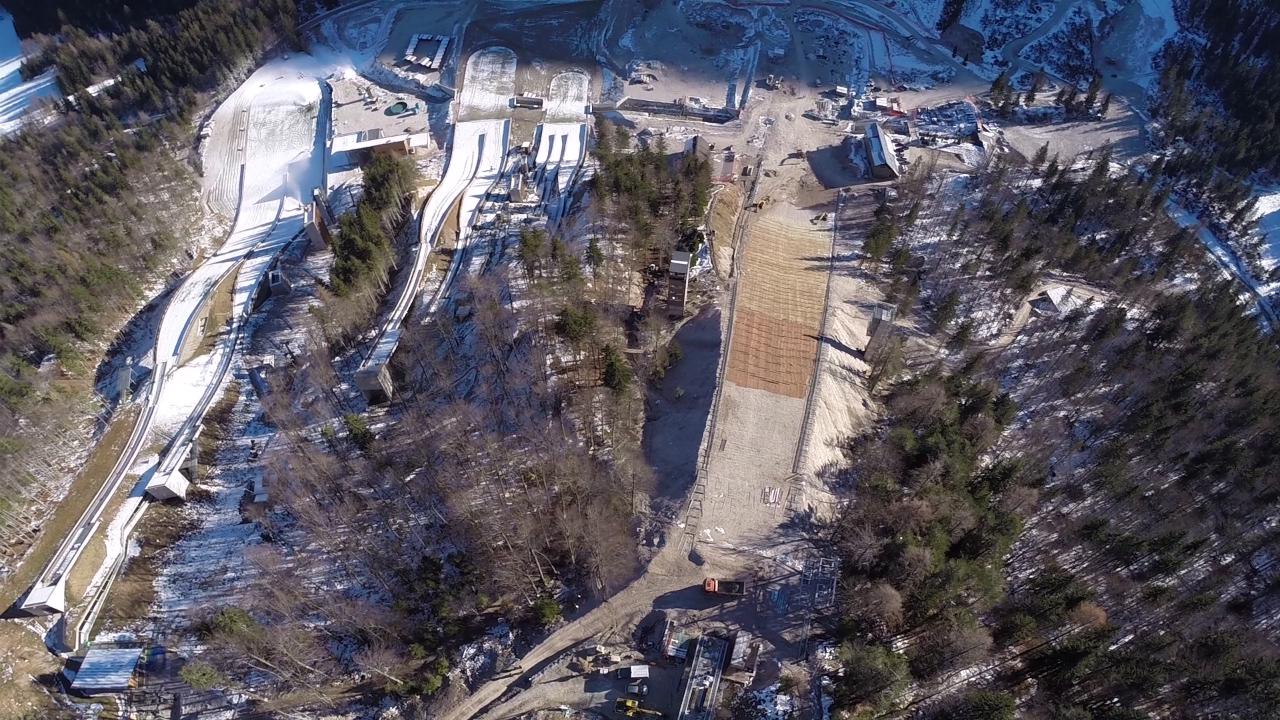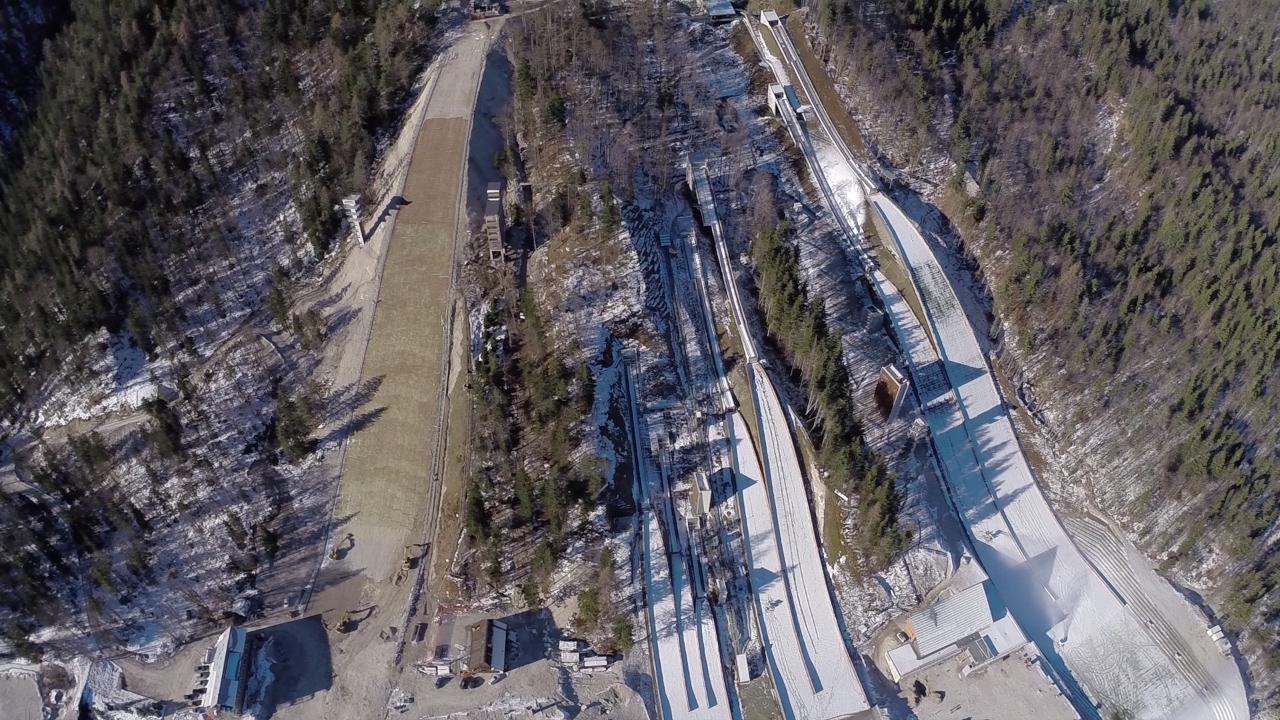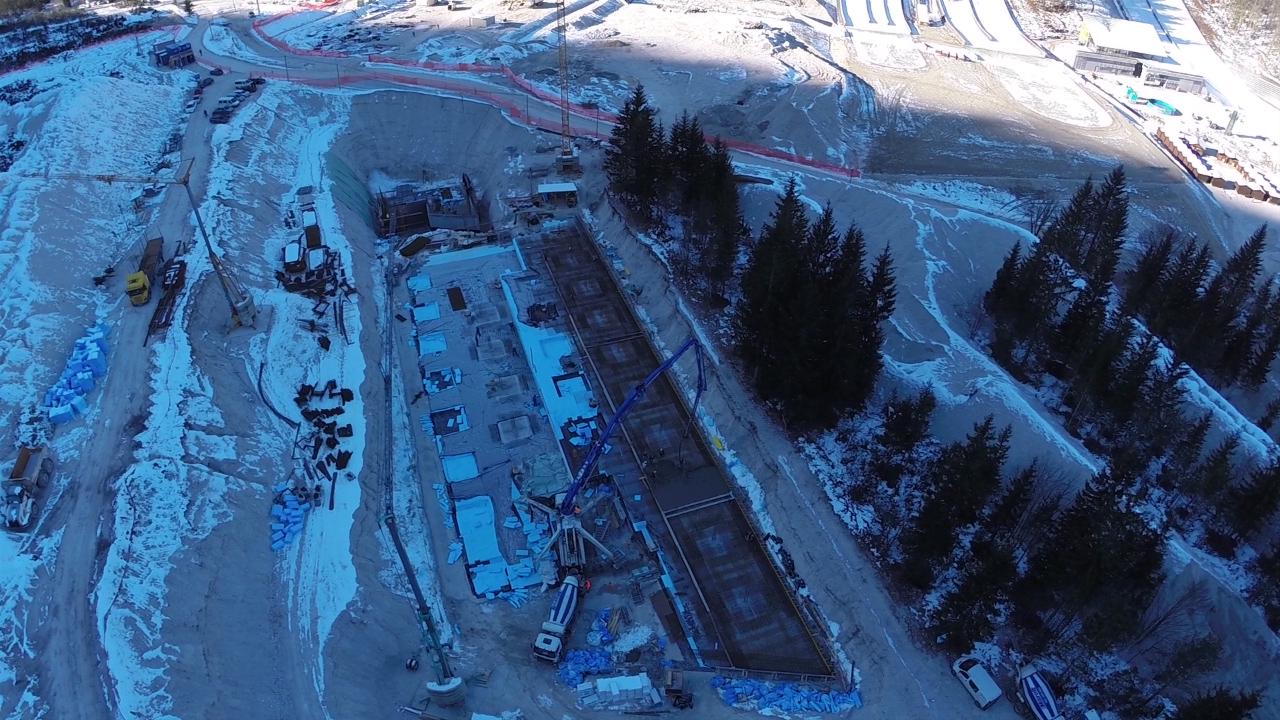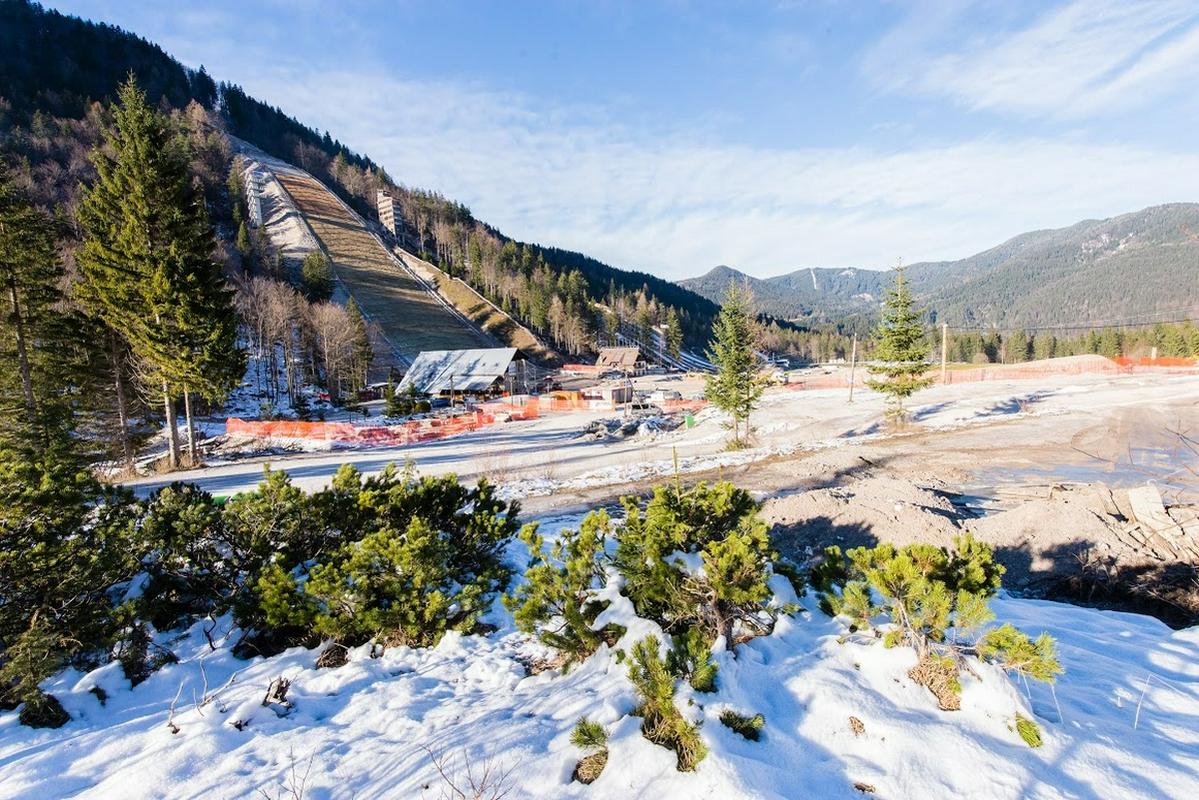


The MMC team visited Planica and recorded the construction process of the Ski Flying Hill with the aid of a remote-controlled helicopter. We also conducted an interview with the director of the Planica sports institute Jelko Gros.
How is the construction coming along? Are there any specific problems you are currently facing?
The area around the in-run is finished, but we have yet to finish the fence. We are also finishing the out-run. Laying concrete at the in-run is perhaps the most challenging part, but we should be finished around New Year’s. We now need to build a room for the accommodation of ski jumpers, which is expected to take another month.
So you will not be trying to complete construction in March, hoping to be ready for the World Cup finals? Will construction machines still be stationed around the ski flying hill?
Yes, they will. We are still expected to build a cross-country centre, but the machines will be parked. The Ski Flying Hill will definitely be finished by March. After all, we have to apply for a permit in February, which means that a commission will inspect everything. We are also waiting for the venue to be approved by the International Ski Federation in January.
How would you compare the new Planica Sky Flying Hill to Kulm and Vikersund? Where do you expect the next world record to be set or maybe someone to soar over 250 metres?
They are all are the same size. Kulm is probably your worst bet. There is always a shadow and no wind during the events, which results in short jumps. Long jumps are only possible at high speeds. Due to the low altitude and high air density, Vikersund has an edge here.
We are obviously hoping for ideal conditions in Planica. We are hoping for the nearby hill to warm up, which would result in a buoyant wind in the lower part of the ski flying hill. During the finals, we usually have one day with such ideal conditions. We need to luck out. The jury cannot break the world record by choosing a high starting point. The starting point has to be just right, and then the thermal conditions – and obviously the ski jumpers themselves - will take care of the rest.
What would be the longest safe jump on these three sky flying hills?
Around 250 metres. This year, the ski jumpers are scheduled to complete on all three ski flying hills, with Planica as the last event of the season.
The Planica Sky Flying Hill will have a unique wind protection system. Can you tell us more? At what speeds can the event still go ahead?
It will be unique because all wind protection systems so far are non-collapsible. We will have a telescopic wind protection system ranging in length from 3 to 24 metres. We will collapse it every evening and extend it in the morning right before the event. The protection system allows for wind speeds of up to 10 m/s.
Will you charge a parking fee?
Yes, but the EUR 2 fee is good for the entire day.
Tomaž Okorn, video: Ergyn Žječi, montage: Ergyn Žječi, Dunja Danial
Translated by D. V.




















































